Stocks had another awful day on Friday following that very strong jobs report, with the S&P 500 dropping by 40 bps and the Qs falling about 1.1%.
For the week, the Qs fell about 4.5%, and from what I could tell, that was the worst first week of the year since the week ending Jan. 4, 2016, when the Qs fell 7%.
1. NASDAQ 100 ETF
The Invesco QQQ Trust (NASDAQ:QQQ) did manage to hold some essential support around $379, and once that level breaks, I think there is a good chance we will see the ETF plunge to the October lows at $359. The RSI was firmly trending lower and has yet to hit oversold levels below 30 yet, so there was certainly more work on the downside.
The more significant question was what happens after the long-trend uptrend breaks, which seemed bound to happen.
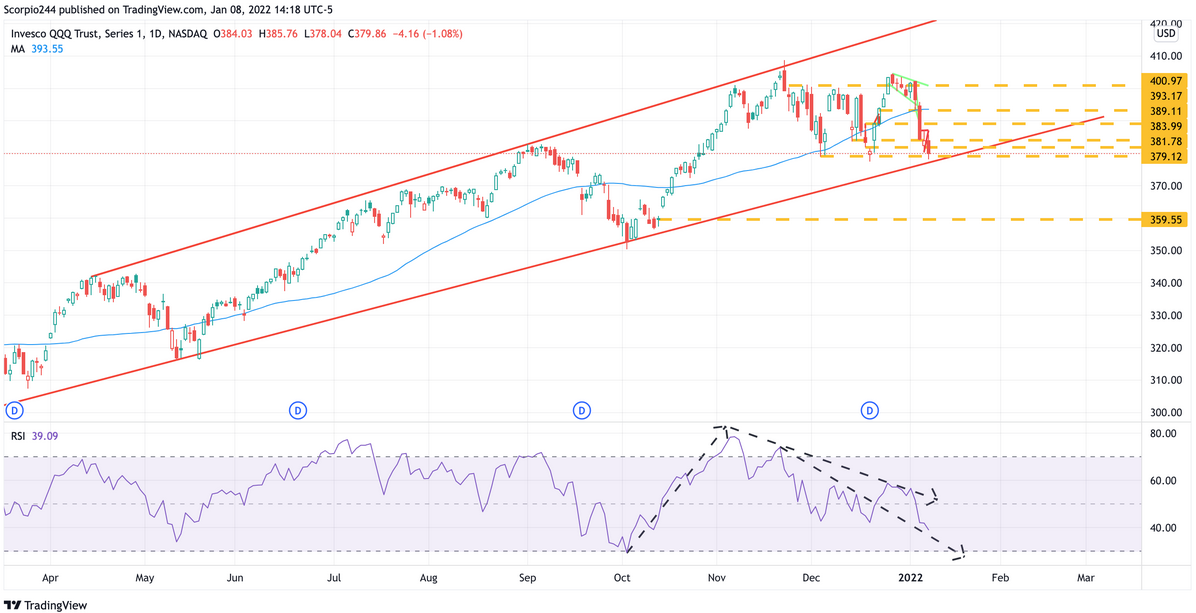
2. Bond ETFs
10-yr ETF
There was also a massive move in the iShares 7-10 Year Treasury Bond ETF (NASDAQ:IEF), which rose back to the highs of 2021, at 1.76%. That is a considerable level for the 10-year 10-year with the potential to move to around 2%. A CPI that comes in hotter than expected this week could quickly help to push the 10-yr over this big resistance area. However, I am not expecting that to happen.

Corporate Bond ETF
Also noteworthy is that iShares iBoxx $ Investment Grade Corporate Bond ETF (NYSE:LQD) has fallen below essential support at $130. It is an indication that yields for corporate bonds are also rising sharply.
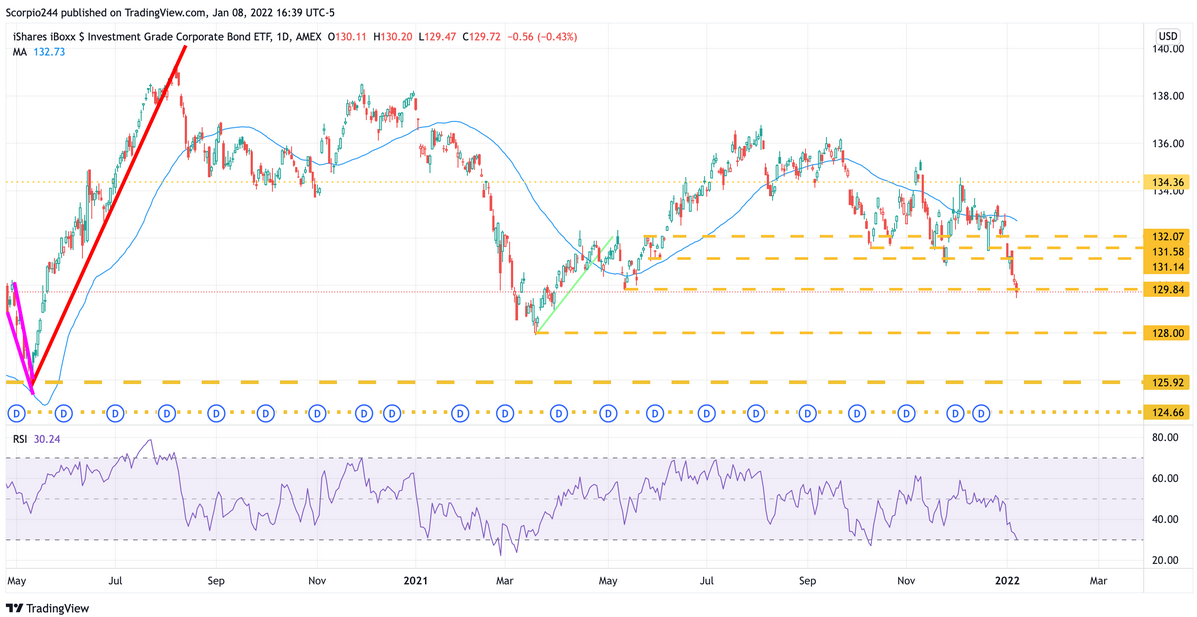
High Yield Bond ETF
Rates for high yield bonds rose sharply this week, as noted by the sharp decline in the iShares iBoxx $ High Yield Corporate Bond ETF (NYSE:HYG).

3. Financial Conditions
These changes in rates were also helping to confirm my belief that the Fed tapering would lead to tighter financial conditions. While financial conditions have not tightened the past two weeks, it seemed highly likely they would begin to tighten again this week.

We care about financial conditions because easy financial conditions allow for expanding margin debit balances. While tightening financial conditions makes it harder to get margin and leads to the contraction of borrowing.
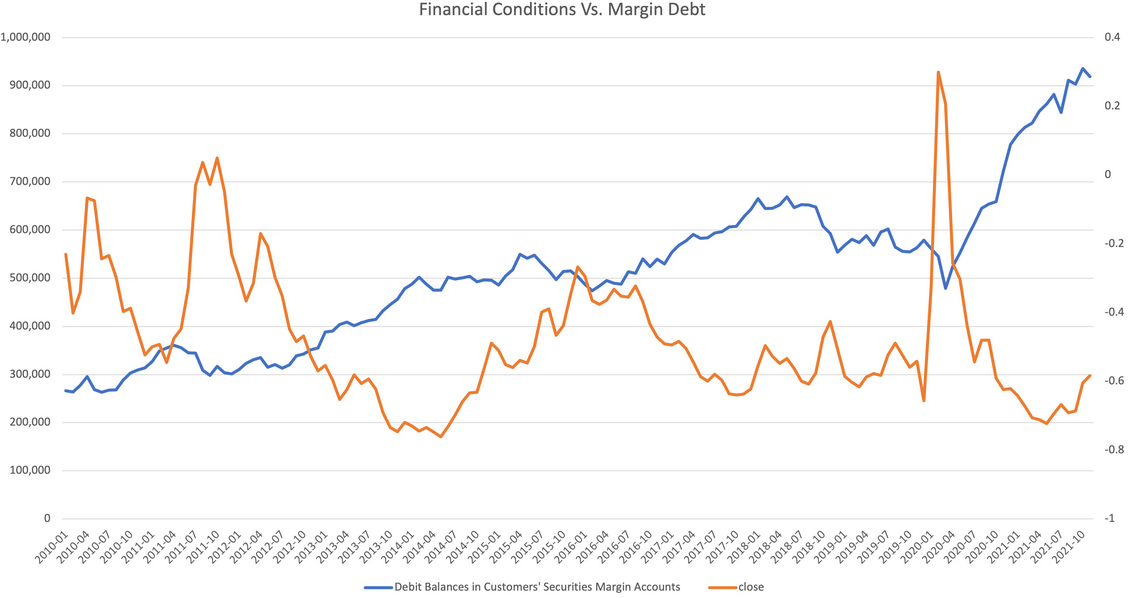
As I have shown before, margin levels and changes in the equity market are highly correlated. Rising margin levels lead to higher equity prices, while the removal of margin leads to lower equity prices and greater volatility.
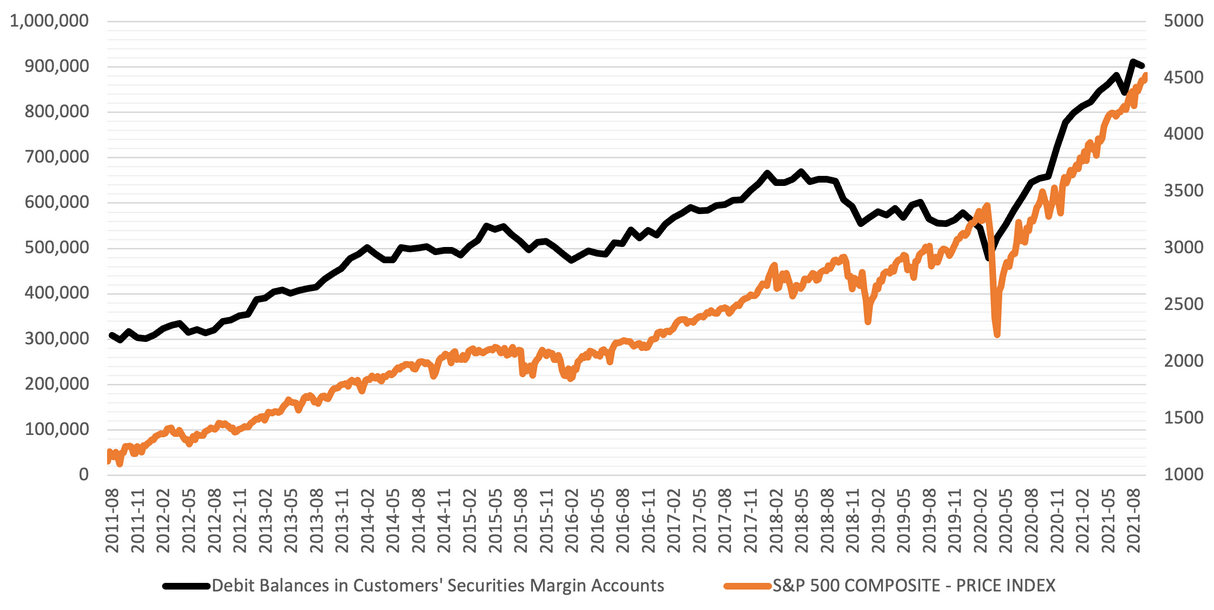
4. Netflix
Netflix (NASDAQ:NFLX) fell sharply last week, nearly 10.2%. What was worse was that the stock gapped below the March 2020 uptrend, falling out of its rising wedge.
It also saw its RSI break below a very long-term uptrend that started in July 2019. The stock was probably heading towards $480 over the next few weeks, but ultimately it was probably heading lower than that.
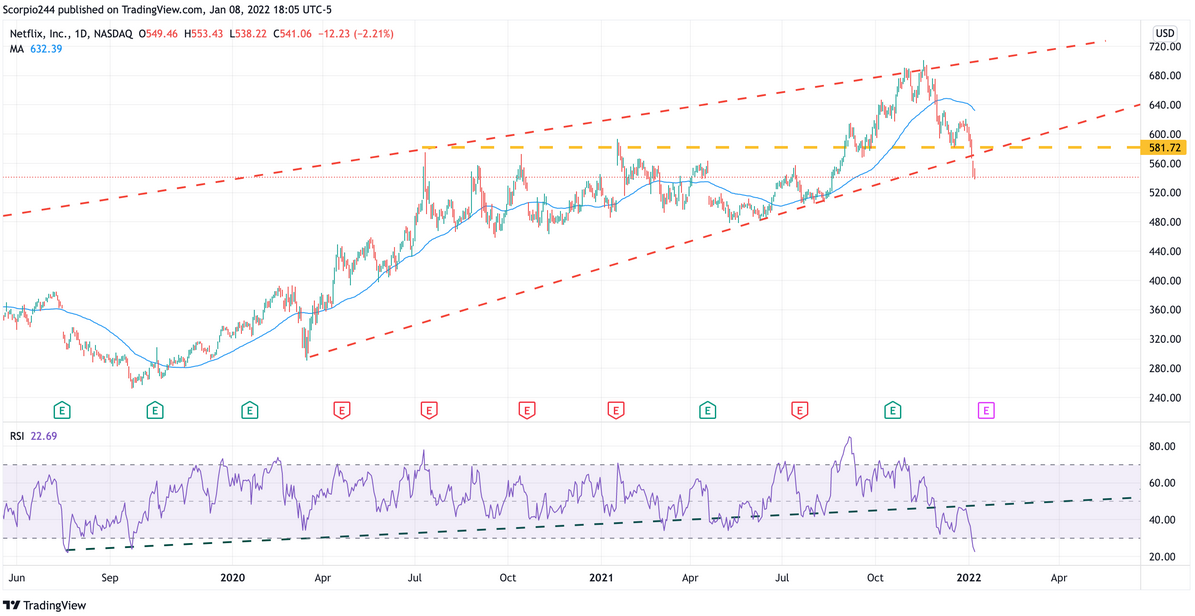
5. Micron
Micron Technology (NASDAQ:MU) formed a bearish divergence, with the price reaching a new high, while the RSI made a lower high. It should look familiar because it was the same thing that happened in December 2020 and January 2021.
Additionally, the stock has been unable to break out to a new high and instead has been stuck at the old highs around $95. This one was probably on its way to filling the gap at $86.
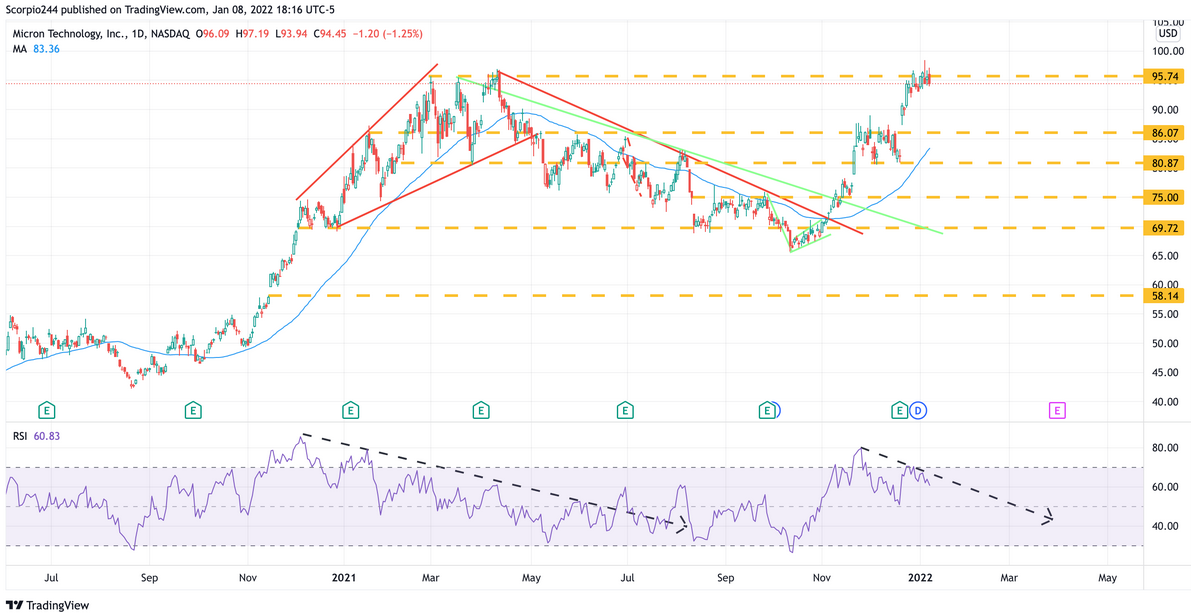
6. Advanced Micro Devices
Advanced Micro Devices (NASDAQ:AMD) fell to support this week at $131; the stock broke the uptrend and then retested that break over the past few weeks.
The stock was sitting on support and finds itself in a downtrend. What made matters worse was that the RSI was on support at 39.20 and signaled that a further drop in the shares was coming. This one will probably be heading back to $117 over the next couple of weeks and ultimately on its way back to $100.
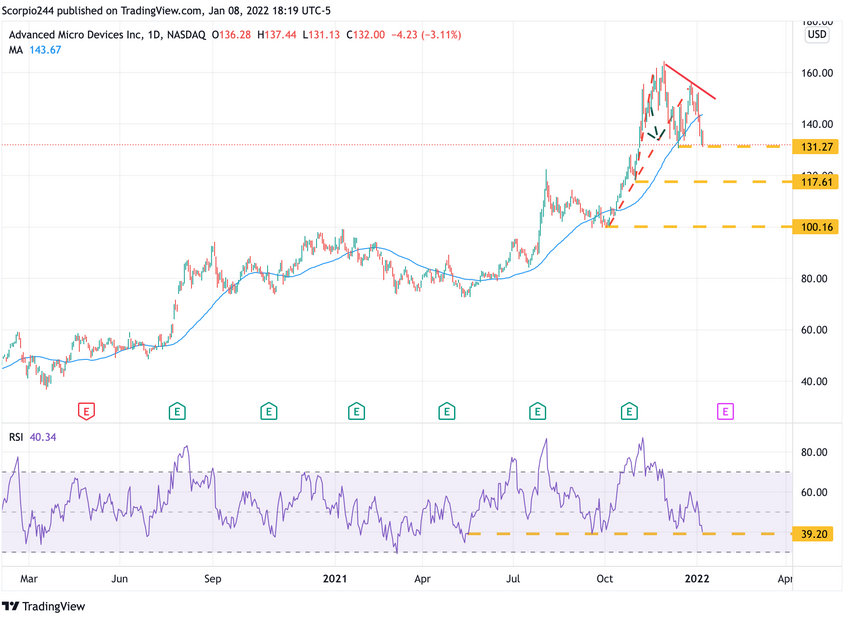
7. NVIDIA
NVIDIA (NASDAQ:NVDA) was no different, with the shares also sitting on support at $270. The trend was lower for both the price and the RSI. The stock wasn't even close to oversold yet, so it will probably push lower and fill the gap at $230 over the next few weeks.
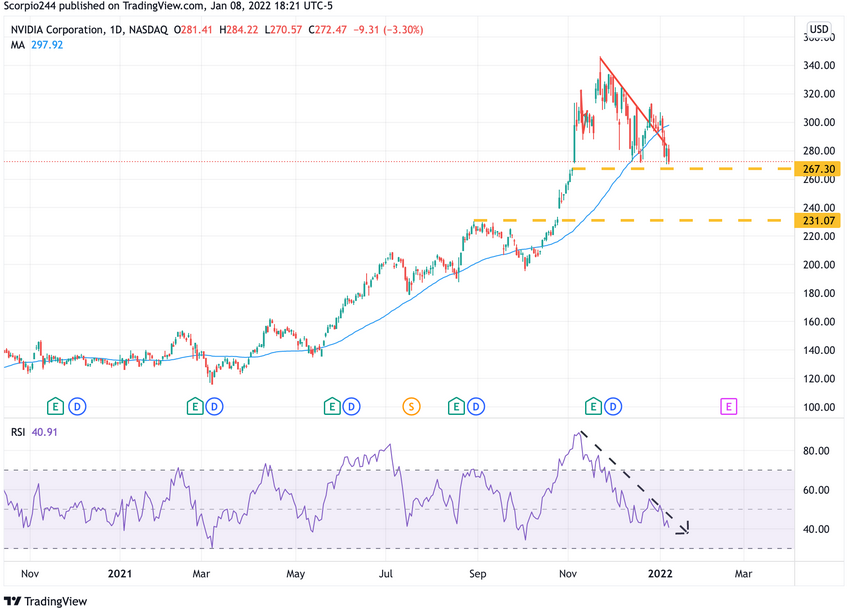
8. Home Depot
Home Depot (NYSE:HD) was just screaming to fill the gap at $375.

